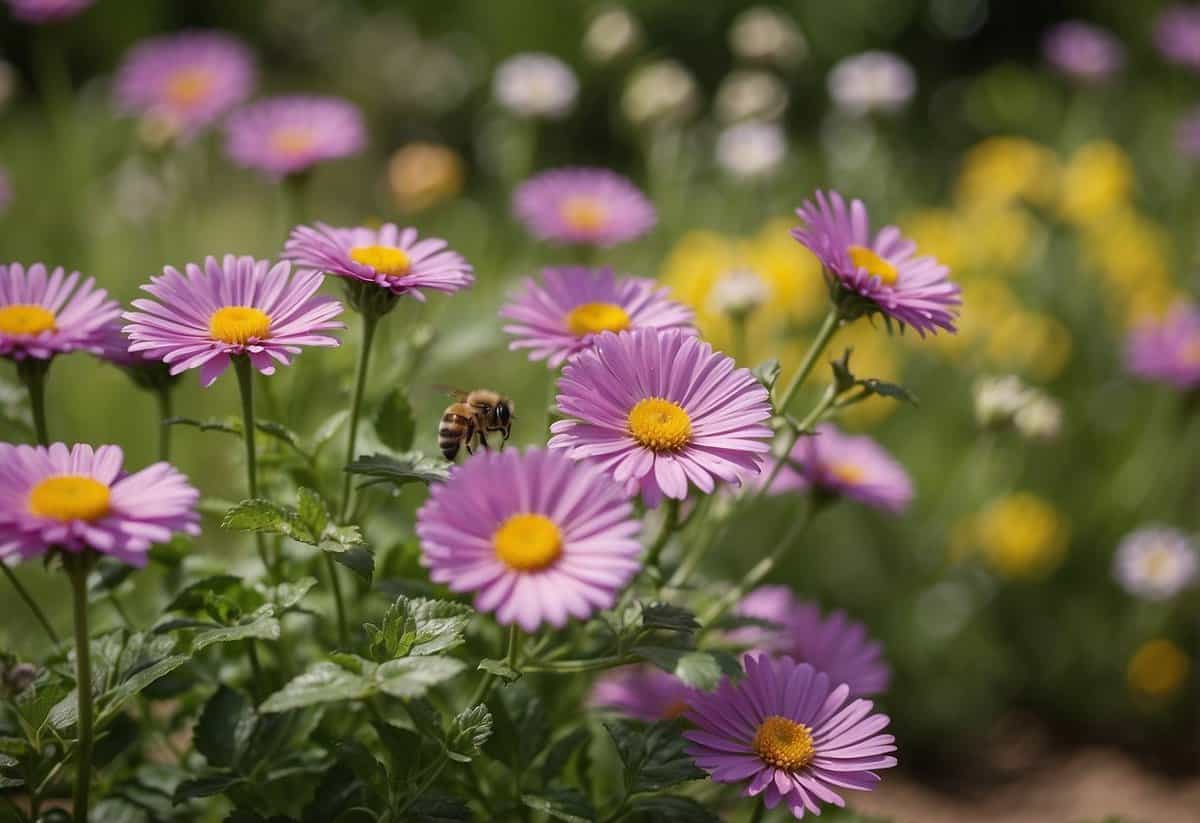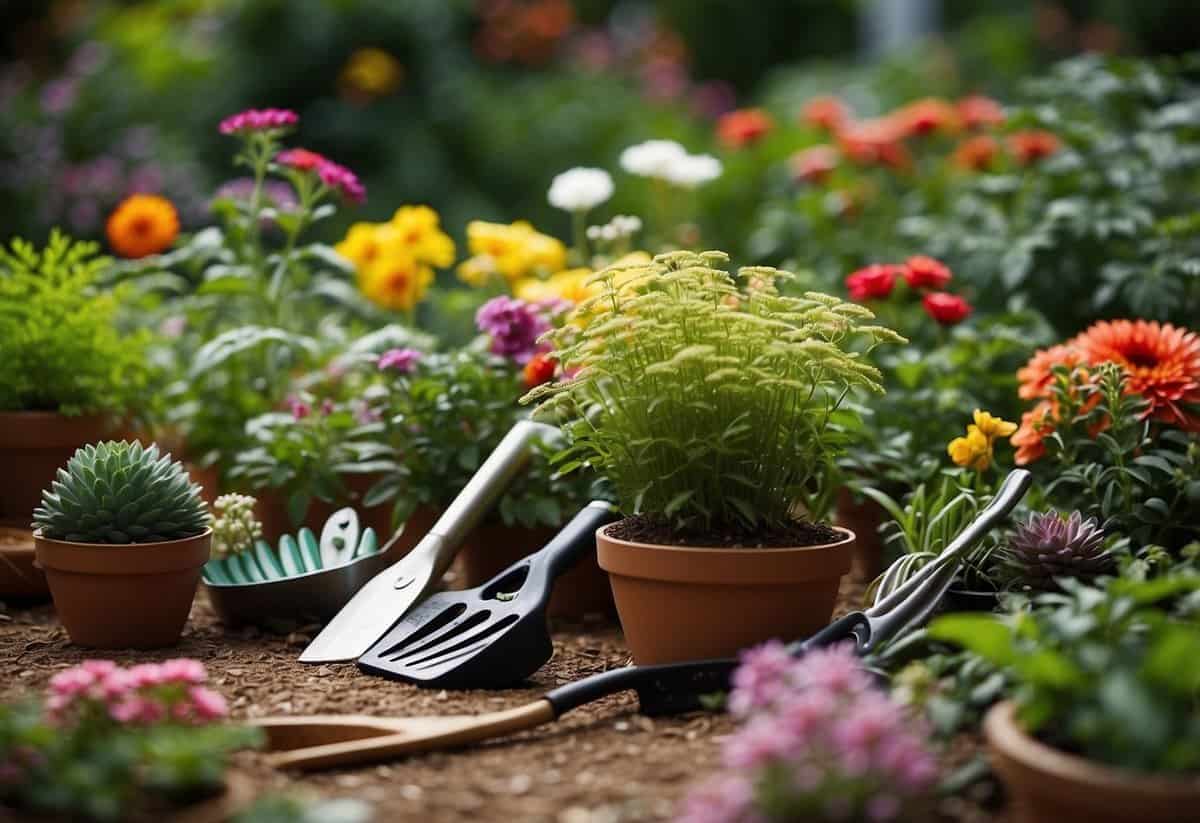Spring Garden Tips: Boost Your Backyard Bloom
Spring is an exciting season for gardeners. As the weather warms and the days get longer, you have the perfect opportunity to prepare your garden for a successful growing season. With the right tips, you can make your garden thrive.

Why is spring gardening important? By taking care of tasks like pruning, cleaning, and planting at the right time, you ensure your plants are healthy and productive. A well-prepared garden not only looks beautiful but also produces better flowers and vegetables.
1) Choose Native Plants

Choosing native plants for your spring garden is a great idea. Native plants are well adapted to your local climate and soil conditions.
They provide food and shelter for local wildlife, including early pollinators. Examples of early spring bloomers include Redbuds, Dogwoods, and Anise Hyssop.
Native plants require less water and maintenance, making your gardening easier. You can also enjoy a beautiful and sustainable garden that supports the local ecosystem.
2) Compost Your Kitchen Scraps

Composting kitchen scraps is a great way to reduce waste and enrich your garden soil. Start by collecting vegetable peels, fruit rinds, coffee grounds, and eggshells.
Avoid adding meat, dairy, and oils, as they can attract pests and create odors. Keep a small bin on your kitchen counter for easy collection.
Make sure your compost pile has a good mix of “green” materials like kitchen scraps and “brown” materials like leaves or straw. This balance helps the compost break down efficiently. For more tips, check out this helpful guide.
3) Mulch to Conserve Water

Mulching your garden is a simple way to save water. It keeps the soil cool and reduces water evaporation.
Spring is an ideal time to add mulch. It also helps suppress weeds and retains moisture.
Using mulch can cut your watering needs by two-thirds. This means less time spent watering and more time enjoying your garden.
4) Use Raised Beds

Raised beds make gardening easier and more efficient. They help improve soil drainage and prevent soil compaction.
Adding a layer of compost each year keeps the soil rich and healthy. Raised beds also make it easier to control weeds.
For the best results, avoid using pressure-treated wood made before 2003, as it may contain harmful chemicals.
5) Install a Drip Irrigation System

You can make watering your garden easy and efficient by using a drip irrigation system. This system delivers water directly to the roots of your plants.
First, lay out your mainline tubing. Next, connect the header to the water source, like your garden hose. Then, add the micro tubing for more precise watering.
For help with tricky areas, use special fittings. Finally, set up a timer to automate your watering schedule.
6) Prune Regularly

Pruning is key to keeping your garden healthy and vibrant. Start with deciduous trees like birch or maple early in spring. Trim any dead or overgrown branches to encourage new growth.
Herbaceous perennials, like lavender and sage, also benefit from a spring pruning. Removing old growth helps them thrive for the growing season.
Don’t forget your flowering shrubs. Prune them just after they bloom to maintain their shape and promote more flowers next year.
7) Plant Companion Flowers

Planting companion flowers can make your garden healthier. Flowers like marigolds can deter pests that harm vegetable plants. They are easy to grow and brighten up your space.
Consider planting catmint between calla lilies. Catmint’s shallow roots won’t interfere with the lilies, and it attracts beneficial insects.
Flowers such as crocuses and tulips bloom early and can kickstart your garden in spring. They attract pollinators like bees, which help your fruits and veggies thrive.
8) Fertilize with Organic Matter

You should enrich your garden with organic matter. Adding compost to your soil can make a big difference. Compost provides essential nutrients and improves soil structure.
Sprinkle organic granular fertilizer, like the MicroLife Ultimate 8-4-6, around your plants. This helps your vegetables grow strong and healthy.
Pull back mulch, scatter the fertilizer, and then replace the mulch. Keep the mulch a few inches away from stems. This method keeps the fertilizer where it belongs.
9) Start a Herb Garden

Starting a herb garden is a wonderful idea for spring. Most herbs need a lot of sunlight. Aim for a spot that gets at least six hours of direct sun each day.
Prepare the soil by mixing in compost. Dig a hole twice as large as the root ball, place the herb, and backfill with soil. Water well.
Consider growing herbs like thyme and cilantro, which are more tolerant of shade. Regularly harvest your herbs to encourage growth. Cutting 3 to 6 inches off the top is a good practice. For more tips, check out these herb garden ideas.
10) Rotate Crops Annually

Rotating crops each year helps keep your garden healthy. If you plant the same vegetables in the same spot every year, pests and diseases can build up in the soil. By rotating them, you can reduce these issues.
Different plants take different nutrients from the soil. Rotating your crops helps balance nutrient levels, making your soil richer and healthier over time.
Try to move plants to different spots in your garden each season. This practice can also improve your garden’s yield and overall health. For more tips, visit The Old Farmer’s Almanac.
Choosing the Right Plants

When setting up your spring garden, it’s essential to pick plants suitable for your climate and ones that grow well together. Proper planning can ensure a healthy and beautiful garden.
Understanding Your Zone
Your USDA Hardiness Zone helps determine which plants can thrive in your region. For instance, if you live in zone 7, you might choose flowers like daffodils and lilacs, which prefer full sun but can tolerate some shade.
Use the USDA Plant Hardiness Zone Map to find your zone. This helps you avoid plants that won’t survive local temperatures. For example, if you are in zone 5, avoid plants that are only hardy in zones 7 and above. Research specific requirements for each plant to ensure they will grow well in your zone.
Companion Planting Options
Companion planting is about placing plants that benefit each other close together. For example, planting tomatoes alongside basil can improve growth and flavor, while also deterring pests. Another good pair includes carrots and onions; onions can help repel carrot flies.
Consider space and sunlight requirements. Group plants by their needs, like placing sun-loving flowers next to each other. Also, avoid planting crops that have adverse effects when grown together. For instance, keep fennel away from most garden plants as it can inhibit their growth.
Soil Preparation

Preparing your garden soil is essential for healthy plant growth. The key steps are testing soil quality and adding organic matter to ensure nutrient-rich and well-drained soil.
Testing Soil Quality
Before planting, you should test your soil quality. This helps determine pH levels and nutrient content. You can buy a soil test kit from a garden center or send a sample to a lab for detailed analysis.
Soil pH should be between 6.0 and 7.0 for most plants. If the pH is too high or too low, plants won’t absorb nutrients properly. Soil tests also reveal nutrient deficiencies, such as low nitrogen, phosphorus, or potassium.
Take samples from different parts of your garden for more accurate results. Mix the samples in a clean container, dry them, and follow the test kit instructions. Adjust pH using lime to raise it or sulfur to lower it.
Adding Organic Matter
Adding organic matter improves soil structure, aeration, and nutrient content. Compost and aged manure are excellent choices. They add essential nutrients and help soil retain moisture.
Add a 2-3 inch layer of compost or manure on your garden beds. Use a garden fork or tiller to mix it into the top 6-8 inches of soil. This promotes root growth and healthy plants.
In addition to compost, consider using mulch. Mulching helps retain moisture and suppress weeds. Organic mulches like straw, wood chips, and leaves break down over time, further enriching the soil. Regularly replenish organic matter to maintain soil health and fertility.
Watering Techniques

Proper watering techniques can help your garden thrive throughout the spring. Focus on setting up an efficient schedule and use mulching to retain moisture.
Efficient Watering Schedules
Watering your garden at the right times and in the right amounts is crucial. Early morning is the best time to water, as it allows the plants to absorb moisture before the heat of the day.
You should aim to water deeply so that the water reaches the roots. Shallow watering can lead to weaker roots. Using a rain gauge or an empty coffee can help you measure how much water your garden is getting. Typically, gardens need about one inch of water per week.
Watering two to three times a week is ideal. When it gets very hot, you might need to adjust this. Always check the soil moisture to make sure your plants are getting what they need.
Mulching for Moisture Retention
Mulching can greatly help in keeping the soil moist. Mulch acts as a barrier, reducing evaporation and keeping the water in the soil longer.
Use organic materials like straw, wood chips, or compost for mulching. These materials also improve soil health as they decompose. Spread a layer about 2-3 inches thick around your plants, making sure not to touch the stems directly.
Mulch also keeps weeds down, which can compete with your plants for water. Less weeding means more moisture for your plants and less work for you. Regularly check your mulch layer and replenish it when necessary to keep it effective.







